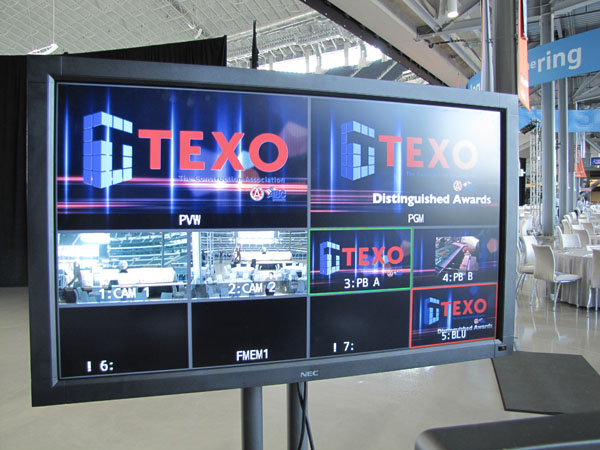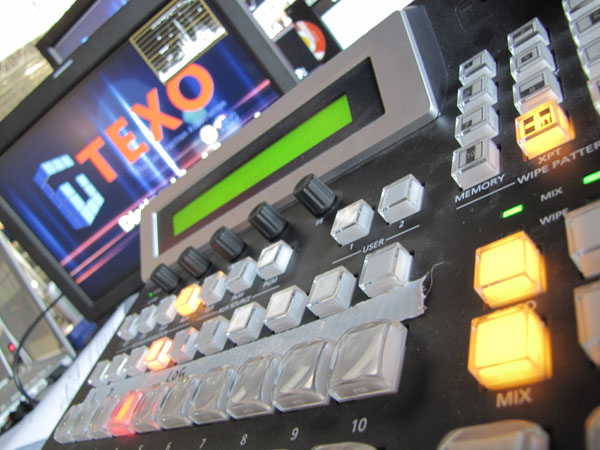Review: Panasonic AV-HS400N HD Video Mixer
HD video mixers aren't cheap, but they do offer amazing functionality inside compact boxes. I put Panasonic's AV-HS400N through its paces during an awards ceremony. I found much to like, and a few minor issues, and look forward to technologies like this becoming more affordable in the years to come.
Multiviewer
I've set up and run multicamera live and live-to-tape productions for nearly 20 years. One of the biggest pains of producing shows in this way is all the monitors you need, and having to set them all up, match them, and then integrate them in the control room. I have, on occasion, used some small and medium-sized production trucks, which means the monitors are not an issue, but long cable runs from inside a building out to a truck can cause problems of their own. The solution used to be a quad-split, and a preview and program monitor. But today's technology has advanced to the point at which one hardware device can handle all the monitoring.
The multiviewer built in to the Panasonic HS400 is quite capable. Not only does it enable you to arrange your inputs however you see fit on the source feeds, but it also outputs multiple resolutions (on the DVI output) so that we could maximize image quality on the external plasma monitor. Plus, depending on your setup, you may not need all 10 inputs shown. So you can dial in a 4 or 6-input matrix multiviewer. This beats carrying individual monitors hands down, plus lets you adapt to needs as you set up when someone asks if you an also add one more thing to the show-as they invariably do.

The Panasonic HS400 multiviewer
But, as I mentioned, the multiviewer is not completely ambidextrous. It can show you all your inputs, plus internally generated color, and the two internal still stores, which I'll get to in a moment. It will also show you your preview and program out, but that AUX output is not even available to select for the multiviewer at all. You might think it a minor point, but it seems a rather inexplicable omission when the multiviewer is so customizable.
Still Store
The HS400 has internal luminance and external keyers that we did not really need for this show, but I was endeavoring to give it even more polish than had been designed in from the outset, and I waned to add a lower-third bug with the logo of the event. So I started messing with the internal still store, and found the greatest weak point of the HS400.
The mixer will accept still images, but they have to be in the resolution of your program. Remember that format change we made 1080? It rendered all the images on the SD card unusable. The mixer cannot resample them, or convert them at all. Moreover, there are two still store banks, where you can read from SD card, capture from video, and even write to SD card, but every process is painfully slow. Aside from bringing up a full-frame graphic or still image, I wasn't even going to dare try to use the still store during the middle of the show. Loading a 720p still image was a good 6-10 seconds.
My initial thought of using the still store to load up lower thirds that could be keyed over the various speakers during the night's show was quickly dashed when I realized that the mixer only stores one image in each bank, and it was rather cumbersome to find a different image and load it into one of the mixer's still store memory banks. My thoughts that it would be as flexible and as fast as a TriCaster were quickly corrected.
Plus, even using a still image of a color log over pure white proved difficult to get a clean key over live video. I tried numerous methods, even inverting the source image, and adjusting the hue 180° to correct for the invert (giving me pure black around my logo) and I could never get a clean, snappy key. I ended up just looking at the still store in utter frustration.

The Panasonic HS400 controls panel in closeup
Thankfully, it was only for something I dreamed up as an added bonus at the last minute, not for something critical. so the fact that I could not get the still store or the internal keyers to work like I wanted with a half hour of effort did not hamper the quality of the show in the least. None of what I wanted to add was initially intended to be there. In the end, the mixer did what we needed it to do and, aside from the video glitch, it enabled us to put on a flawless multicamera, laptop, Blu-ray, HD IMAG show at Cowboys Stadium.
I came away liking the HS400, despite the small bits that we had problems with. We like our broadcast gear to do a job cleanly and smoothly. It did what we intended it to do with polish. We'll iron out the conflict between the laptops and the mixer for the next production, and that will give us the ability to add even more inputs and more excitement to our next multi-camera production with the HS400.